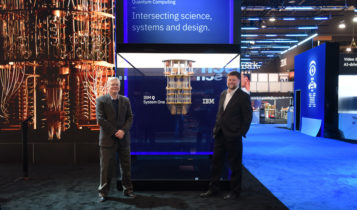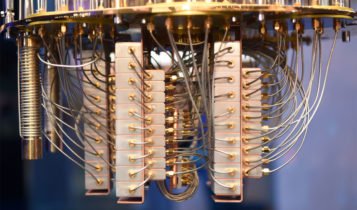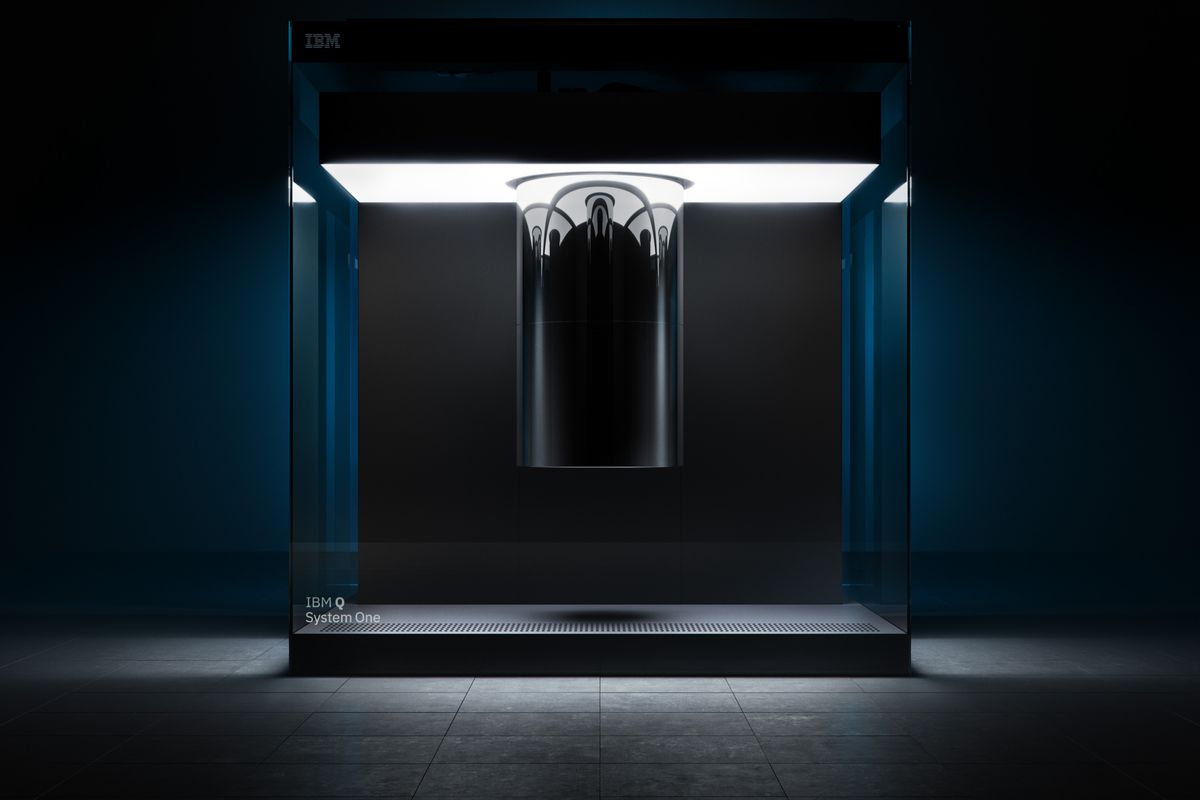One of the biggest new presented to the CES of this year arrives from the IBM which welcomes its last product: Q System One, the first commercial quantum computer.
This innovative product lets make a step forward in the quantum computers’ world that, although they are theoretically thousands times faster and much more performing than the normal ones in the marketplace, they still have many problems to solve.
Quantum computer

What’s the difference between a normal computer and a quantum one?
The traditional computers memorise the informations in bit, while the quantum ones in qubit, by using the laws of the quantum physics.
What makes it extremely faster and much more performing than the traditional models?
The quantum computers are focused on the quantum mechanic, by using methods for the elaboration of the informations like the effects’ overlap or the entanglement, all of it by using the behaviour of the elementar particles.
The idea dates back to the 1982, when Murray Gell-Mann saw the possibility to use the quantum physics to realize a super computer.
IBM was a pioneer of that science. In the 2001, infact, it creates the first quantum computer at 7 qubit. In the 2005 the scientists of the Insitute of quantum optical and quantum informatics of the University of Innsbruck create the first qubyte (8qubit).
Are, instead, the researchers of the University of Harvard to firstly be able to transfer quantum informations between different kinds of quantum memories.
In the 2006, again in the University of Innsbruck, Peter Zoller finds out how to make stable the quantum memories.
The research goes on and the D-Wave System presents the quantum computers Orion first, and D-Wave One later.
In the 2016 IBM presents the computer IBM Quantum Experience and the 8th of January of the 2019, finally, arrives IBM Q System One, the first quantum computer for commercial uses.
Together with it has been presented even the platform IBM Q Experience and Network, for the scientifical and commercial usage.
IBM Q System One

“IBM Q System One represents an important step torward the commercialization of the quantum computation.
This new system is essential to expand the quantum computation beyond the walls of the research’s laboratory while we still working to develop quantum applications for the companies and the science”, claims Arvind Krishna, director of IBM Research.
Together with scientists and engineers of the IBM Research cooperated to the realisation of the quantum computer even many designers, architects and producers. Between them the english designer studio “Map Project Office” and the Universal Design Studio and the italian company Goppion.
To that one was given the realisation of the pod that wraps and protects the Q System One. It is a nine inches case of borosolicate glass.
The case works as isolator. According to the scientists, infact, the superconductive qubit loses their propierties in 100 microseconds, bacause of the vibrations of the environmental sounds, of the temperature’s variations and of the electromagnetic wave.
Components of IBM Q System One
What’s hidden beyond the borosilicate glass’ case?
A group of personalised components that gives an advanced quantum computation. Like a quantum hardware, designed to automatically give repeatable and predicatable qubit and a quantum processor.
The computer has a system of criogenic cooling that keeps the temperature constantly close to the absolute zero, to preserve the integrity and the quality of the used qubit.
This is really an important step, it is the first time that a quatum computer goes outside the edges of the laboratory. By the way the 20 qubit of the Q System One are still so far away from the real target that according to the IBM’s researchers is the one to reach: 50 qubit.
How to use the IBM Q System One
Even if it has been made available for the big audience IBM Q System One is not really purchasable. And it won’t be really easy to bring it home neither, because it is a cube of glass 2,8 meters tall.
The quantum computer is available for the big audience for the remote usage, through the cloud platforms IBM Q Experience, pubblic and free, and IBM Q Network for companies and scientifical researchers.
Therefore, IBM wants to open an IBM Q Quantum Computation Center for the commercial customers in New York, already during this year, but it won’t be the only one.
The service of quantum simulation IBM Q Experience has been already experimented by 100.000 users and 6,7 millions of quantum experiments have been already made.
This post is also available in:

